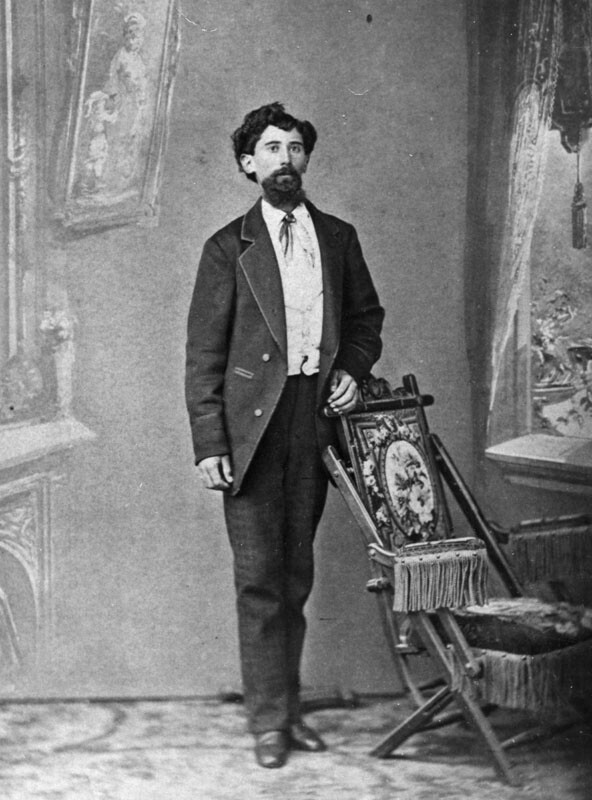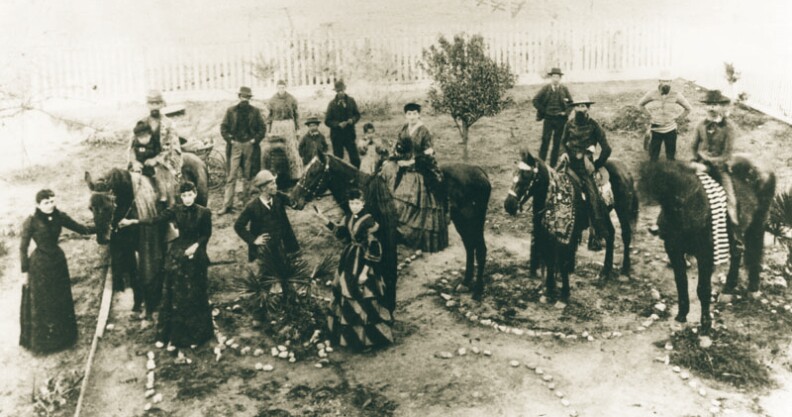Off-Ramp host John Rabe talks with Theresa Chavez, a Californio, whose family owned tens of thousands of acres in Old LA. The land is gone, but she's now producing artistic director of About... Productions, which presents The Latin Wave, a series of productions and events looking the mainstream media's treatment of Latino culture. It's at the San Gabriel Mission Playhouse from May 7 – May 21, and includes a revival of the play "They Shoot Mexicans, Don't They?," which opens May 18.

It's hard to imagine now, but Southern California was ranchos of thousands or tens of thousands of acres, owned by relatively small number of families who received the land as grants from the Spanish and Mexican governments. The ranchers were the Californios, whose names you know because they're place names now: Pico, Sepulveda, Feliz, Bandini, Duarte.
LISTEN: Pio Pico, a life so big he was buried twice!
These early Angelenos - who predate all but the Native Americans - still walk among us, their family histories told in colorful maps and ancient photos.

Take Theresa Chavez, for instance.

This was her family's home in downtown Los Angeles, which fell victim to the Hollywood Freeway:

Chavez is a playwright and producing artistic director of About... Productions. But her 3d great grandfather - son of a soldier in the New Spanish Army who arrived here in 1771 - was Don Antonio Maria Lugo, recipient of an initial 29,514 acres in 1810. According to the LA Public Library, "'El Viejo Lugo' gradually added vast properties, and it was said he could ride from San Diego to Sonoma, a distance of nearly 700 miles, without once leaving his own land."
"They were not living high on the hog," Chavez says of the Californios. "They worked their butts off. They grazed cattle for a hide and tallow industry that existed from here down into South America." Think of it as a modern American ranch or farming family with tracts of land, but little ready cash. "When California became annexed - even though the Treaty of Guadalupe Hidalgo said everyone was going to hold onto the land that they had - of course that didn't happen." Add to that poorly drawn maps that didn't hold up in US courts, land sales, squatters, a broken treaty, fraud, and a changed economy. They were land rich and cash poor, and when we switched from a barter economy to a cash economy, they were forced to sell.
By the turn of the last century, the Lugo land holdings were down to 14 acres. But the memories lived on. "My mother was born in 1921," Chavez says, "and when she grew up, her cultural world was around other Californio families. And they still met, and they still socialized, and they still had this identification, even though it was at that point just a social and cultural identification. She had this very strong urgency to live and breathe it, and she passed that on to me."
I think of Chavez and the Californios a little as the displaced aristocrats of Europe ... kings, queens, princes, and princesses that live among us. Maybe they're renting out their castle as a B&B; maybe they're picking up the trash. I ask her, is she mad about losing all of what they had? "Am I ticked? It pisses me off that people were taken advantage of, that there were lies and breaking of treaties, and it was all a big manipulation, not done on the up-and-up."
Interestingly, as much as Chavez thinks about her heritage, when she travels around Southern California, she's thinking not just of the huge ranchos. Her awareness goes much deeper, and yours can, too.
"I got into this notion of the earth here and the embossing of the earth with Native American trails, which then became rancho boundaries, which then became a lot of our major streets: LA Cienega, Western, Wilshire, Sunset. Those major arteries are built from many of the rancho boundaries, which again are built upon American Indian trails."



